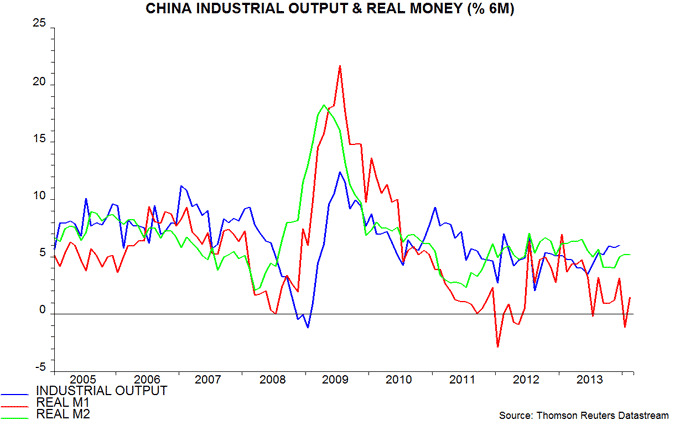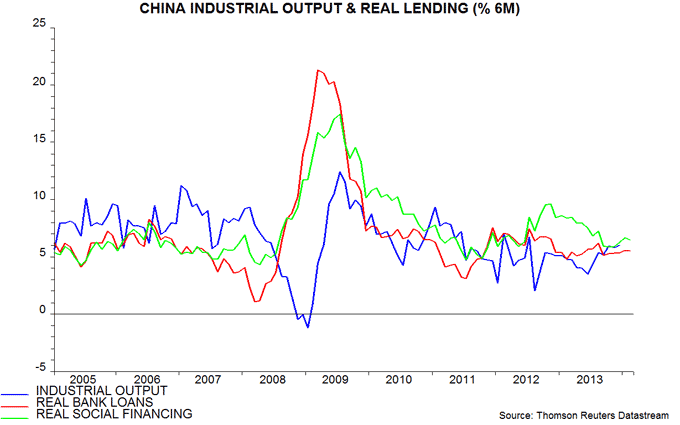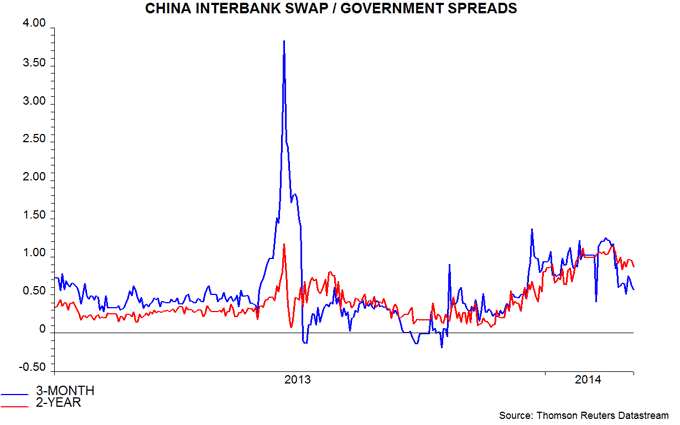Chinese economy sluggish but hard landing risk contained
Chinese monetary trends are stable and consistent with continued subdued economic expansion.
Real narrow money works best as a leading indicator for most economies followed here but in China’s case the broader M2 measure has performed equally well in recent years. Six-month real M2 expansion was stable in February and close to its average over the last two years – see first chart.
The six-month change in real narrow money M1 had turned negative in January but this was attributed here to Chinese New Year’s Day coinciding with the end-month reporting date. A rebound duly occurred in February, although real M1 expansion remains weak by historical standards.
Monetary trends, therefore, suggest continued sub-par growth but no increase recently in the risk of a “hard landing”.
On the credit side, six-month expansion of real bank loans has been stable over the past year but the broader “total social financing” measure has slowed as the authorities have clamped down on off-balance-sheet lending – second chart. The broader measure is still growing faster than bank loans, suggesting no early relaxation of credit restrictions despite low inflation.
Money market conditions, however, have eased since the New Year, with the one-month repo rate now close to its level at the same stage of the last three years* – third chart. This easing has been accompanied by some narrowing of spreads between interbank swap rates and government yields, although these remain elevated – fourth chart.
In other Chinese news, exports slumped in February but much of the weakness was probably due to New Year timing effects and a reduction in disguised capital inflows, the latter reflecting both an official crackdown on fake invoicing and (correct) expectations of a weaker exchange rate.
*Money market rates exhibit a strong seasonal pattern, increasing the value of year-over-year comparisons.





Reader Comments